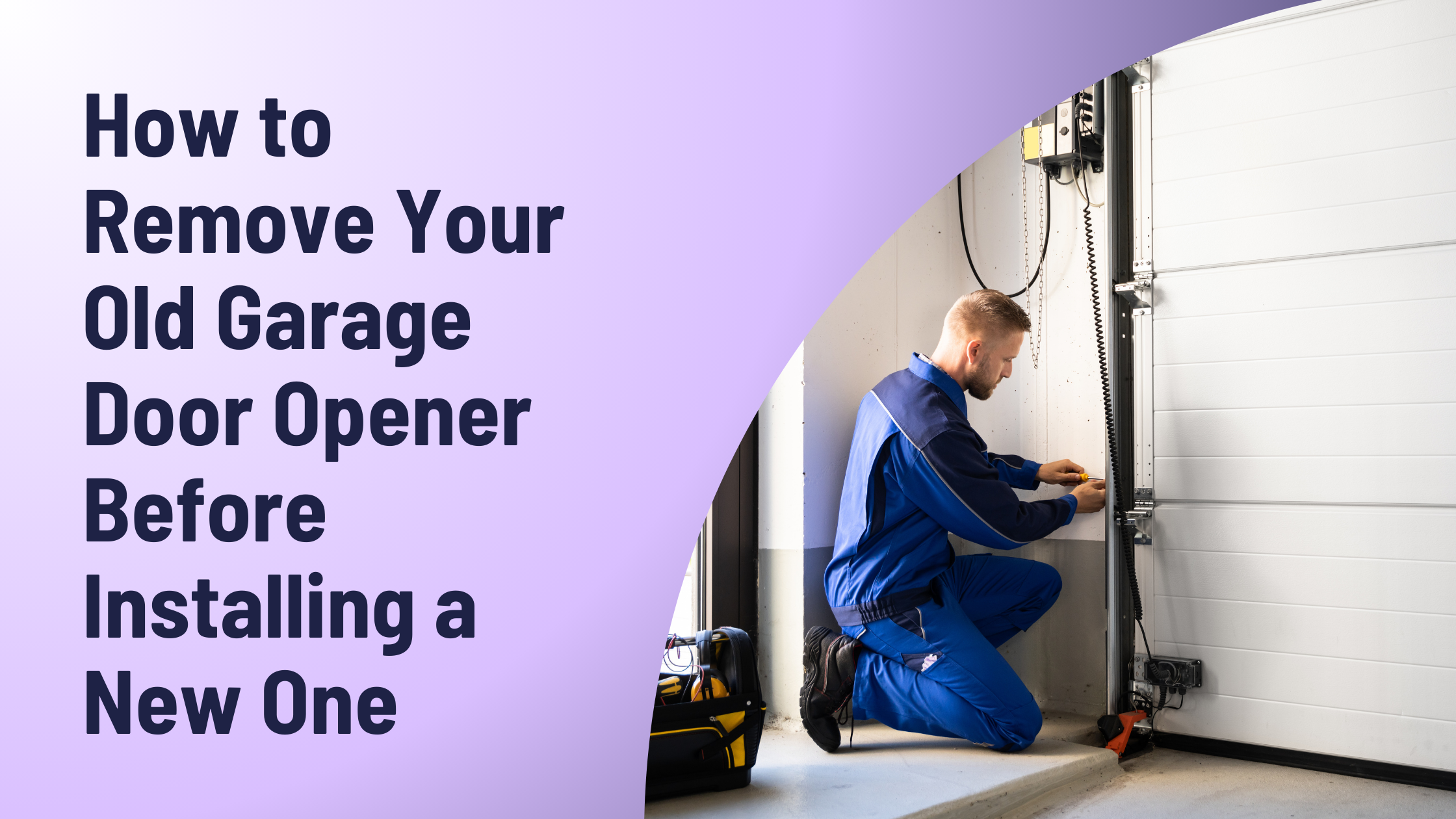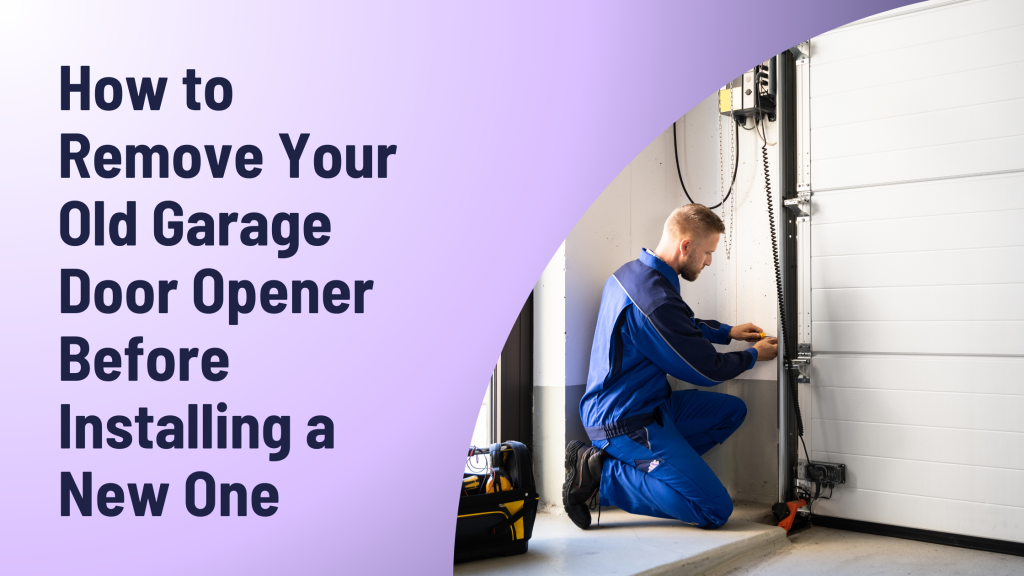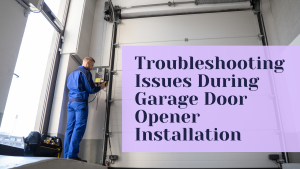Replacing an old garage door opener with a new one is an excellent way to enhance the functionality and convenience of your garage. If you’re planning to tackle this project yourself, removing your old garage door opener is the first and crucial step before installing a new garage door opener. While it might sound daunting, it’s a manageable task when you break it down into a clear process. In this guide, we’ll walk you through the steps to remove your old garage door opener and prepare for garage opener installation, ensuring a smooth transition to your new system.
Tools and Materials You’ll Need
Before diving into the garage door opener installation, you’ll need to gather the appropriate tools and materials for removing your old opener. Being prepared will save you time and ensure that the process goes smoothly.
Essential Tools
- Replace the batteries: Begin by changing the batteries in your remote and keypad. Make sure to inspect the battery terminals for cleanliness and secure connections.
- Drill and bits: Used to remove screws or brackets.
- Ladder: A sturdy ladder is essential for reaching the opener’s mounting points.
- Pliers: For disconnecting wires or removing fasteners.
- Screwdrivers: To remove any smaller screws or components.
Safety Equipment
- Safety glasses: To protect your eyes from flying debris or dust.
- Gloves: Protect your hands from sharp edges and heavy components.
- Steady footwear: Non-slip shoes to avoid accidents on ladders or while handling equipment.
Additional Materials
- Pry bar: Useful for loosening stubborn components.
- Container for screws and small parts: To keep everything organized and prevent loss of important pieces during the removal.
Step-by-Step Process for Removing Your Old Garage Door Opener
Step 1: Disconnect Power to the Garage Door Opener
Before you do anything, the first step in removing a garage door opener is to ensure the power is turned off. Locate the garage door opener’s power source, typically plugged into an outlet or connected to a dedicated circuit, and unplug it. It’s also a good idea to disconnect the breaker to the garage if it’s hard-wired into the system.
Step 2: Detach the Opener from the Garage Door
Once the power is off, the next step is to disconnect the opener from the garage door itself. Most garage door openers have a mechanism that connects the motor to the door via a trolley system. Using your socket set, carefully unbolt and detach the arm that connects the door to the opener. Be sure to support the door with a helper or a temporary prop to prevent it from moving during this process.
Step 3: Remove the Opener’s Mounting Bracket
Next, you’ll need to remove the mounting bracket that holds the opener to the ceiling. This part can be tricky, especially if it’s been in place for a long time. Using your socket set or wrenches, loosen the bolts holding the bracket to the ceiling or rafters. If the bracket is stubborn, a pry bar can help loosen it from the ceiling.
Step 4: Disconnect the Rail and Trolley System
The rail and trolley system is what moves the door up and down. To fully remove the opener, you’ll need to disconnect this system from the motor unit. Typically, there are bolts securing the rail to the opener motor. Use a drill or socket wrench to remove these bolts. Once disconnected, carefully slide the rail out of place.
Step 5: Remove the Safety Sensors and Wiring
At this point, you can begin disconnecting any safety sensors and wiring from the opener. Most automatic garage door opener installations have sensors near the bottom of the door. These sensors are wired into the opener’s control unit, so carefully cut or unscrew the connections to remove them. Be sure to label the wires if you plan to reuse any components for your new opener installation.
Step 6: Take Down the Wall-Mounted Controls
Lastly, you’ll need to remove any wall-mounted controls or remotes associated with the opener. Unscrew the mounting plate, and disconnect any wires. Depending on your setup, the remote unit may also need to be powered off before removal.
Tips for a Smooth Removal Process
Label and Organize Parts
As you work through replacing the garage door opener, label the different components and keep screws and bolts organized. This will help you during the garage opener installation of the new system and ensure you don’t lose any important parts.
Get Help for Heavy Components
Older garage door openers can be quite heavy, especially if the motor is large. Get help from a friend or family member to safely lower the opener and prevent injuries.
Inspect Your Garage Door
Before proceeding with installing the new garage door opener, take the time to inspect the garage door itself. Ensure that the springs, cables, and tracks are in good condition. If any parts seem worn or damaged, consider replacing them before installing your new opener.
Safety Precautions to Keep in Mind
- Wear safety gear: Always use safety glasses and gloves when handling tools or disassembling parts.
- Be cautious with springs: Garage door springs are under extreme tension. If you’re not familiar with how to handle them, seek professional help. Spring tension can cause serious injury.
- Avoid overexertion: If you’re dealing with heavy components, work in stages and don’t try to lift more than you can handle.
What to Do with the Old Garage Door Opener
Recycling and Disposal Options
Once you’ve successfully removed your old opener, it’s time to dispose of it. Many parts of the opener can be recycled, including metal and plastic components. Check with your local recycling center to see if they accept garage door openers for recycling. If not, dispose of the opener through regular waste disposal.
Repurposing Usable Components
If the old opener still functions partially, you may want to repurpose certain components. Garage door motors can be reused in other DIY projects, and parts like the safety sensors or remotes can be kept as backups. You may also want to sell or donate the parts if they’re still in working condition.
Preparing for the New Garage Door Opener Installation
Clean the Installation Area
Before you begin installing your new garage door opener, clean the area where the motor and tracks will be mounted. Remove any dust, debris, or old mounting hardware to ensure a clean and stable surface for the new opener installation.
Review the New Opener’s Requirements
Make sure to review the instructions for your new garage door motor installation before you begin. Each opener may have different installation requirements, and familiarizing yourself with the specifics will ensure a smooth process. Also, ensure that the new opener is compatible with your garage door’s size and weight.
Replacing your old garage door opener is a manageable project with the right tools and preparation. By following these steps and ensuring that you take the proper safety precautions, you’ll be able to remove your old opener and get ready for your automatic garage door opener installation. Whether you’re doing it yourself with diy garage opener plans or hiring a professional, the key is to take your time, stay organized, and work safely.




